Creating an organic garden in Almeria province, Andalucia. Taking stock during the first week
By Nick Nutter | Updated 30 Sep 2022 | Andalucia | Organic Garden |
Login to add to YOUR Favourites or Read Later
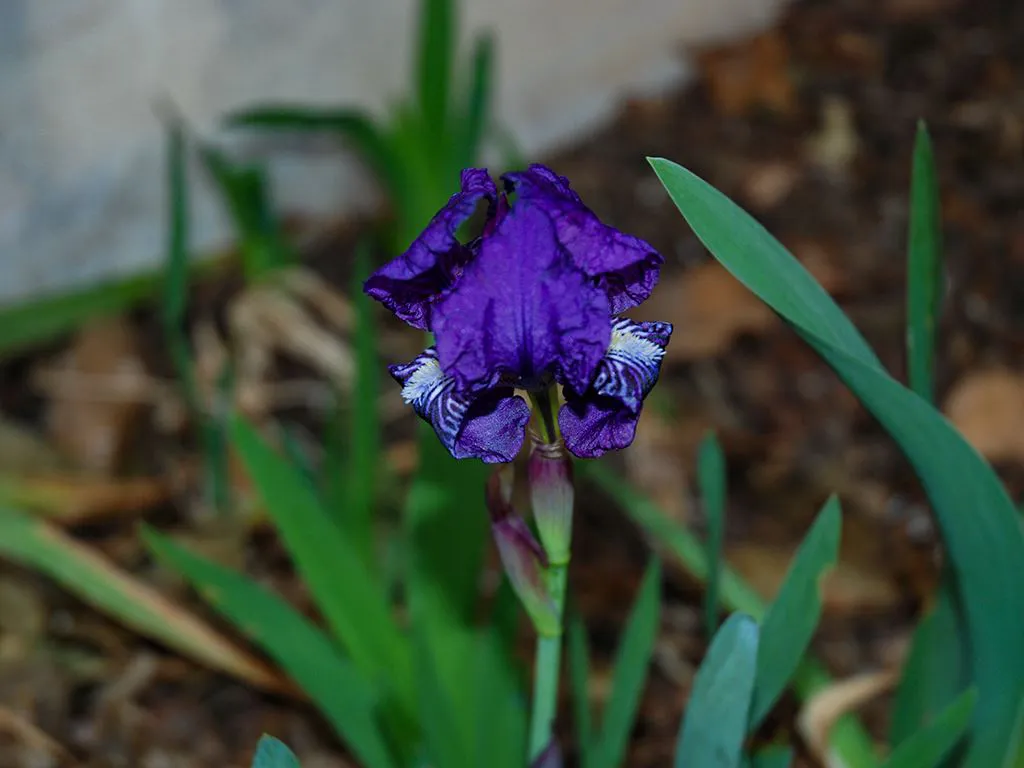
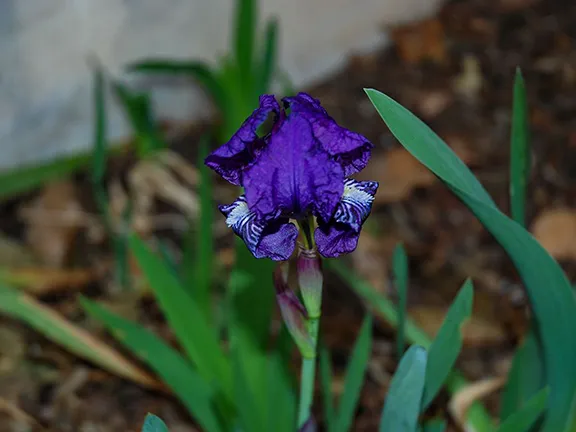
Spanish Iris
All the gardening books tell you to take stock of what you already have in an inherited garden before picking up the spade, however tempting it may be to get stuck in.
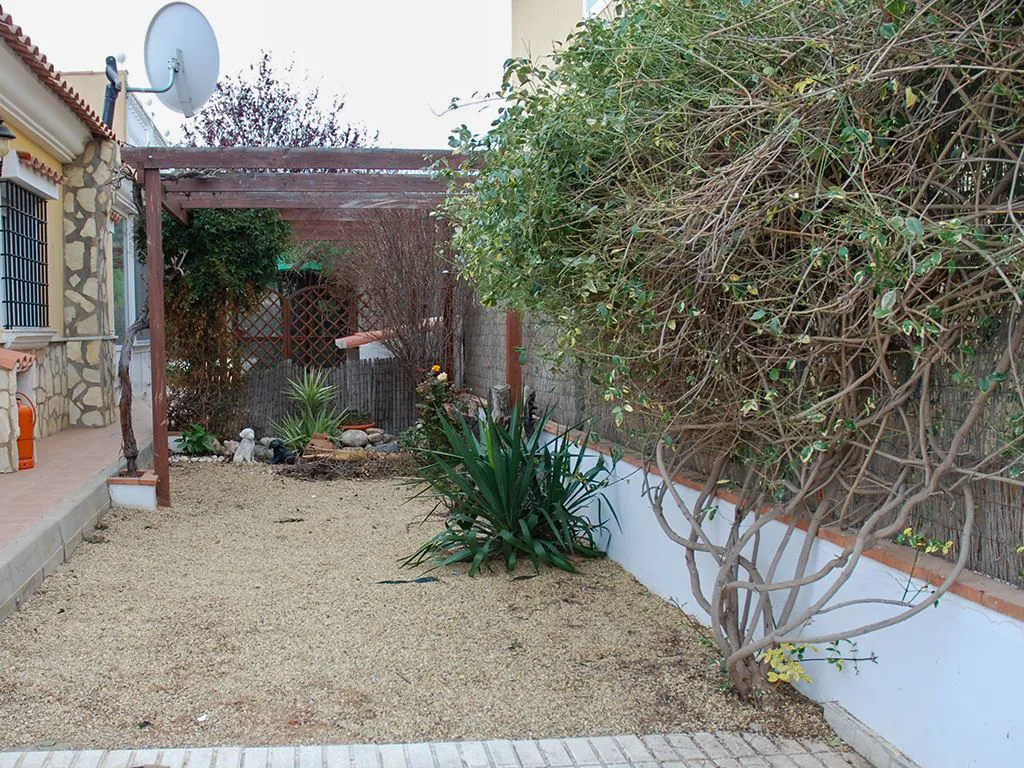
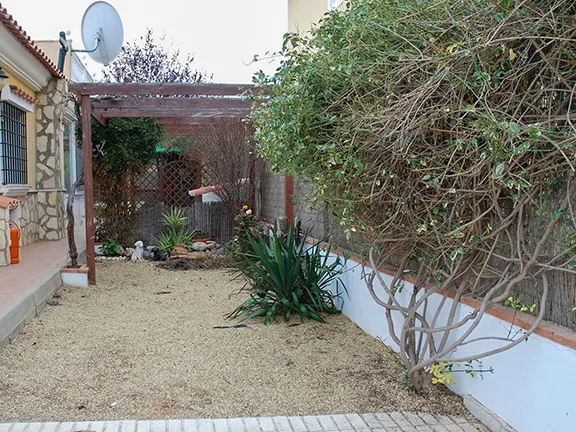
Shady side garden
Our new house is in inland Almeria at an altitude of 780 metres so, in winter at least, it is noticeably cooler than the coast. However, the house is surrounded by land on which fruit trees are cultivated; almonds, olive, oranges and lemons, so the temperature does not drop much below freezing point that often or for very long. Established citrus trees will survive temperatures down to about 25 degrees Fahrenheit. The house is in a valley between two ridges that rise to over 900 metres to the west and east, so we are sheltered from the prevailing winds to a certain extent. That is a good thing, the winds up the Almanzora valley can be ferocious.
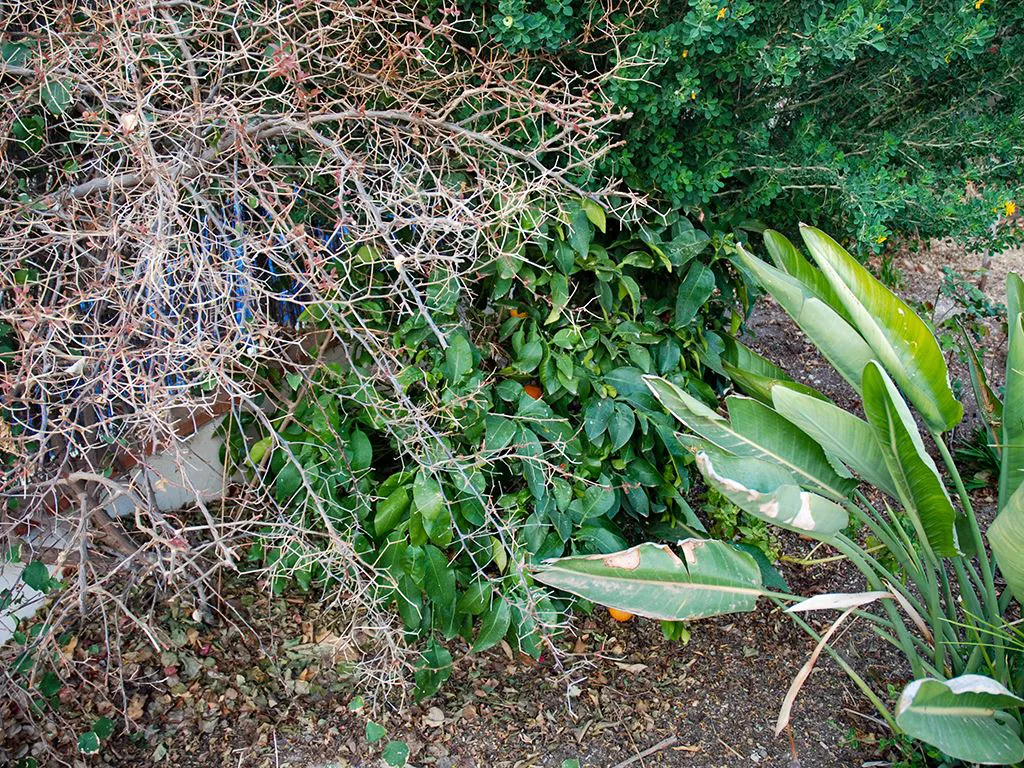
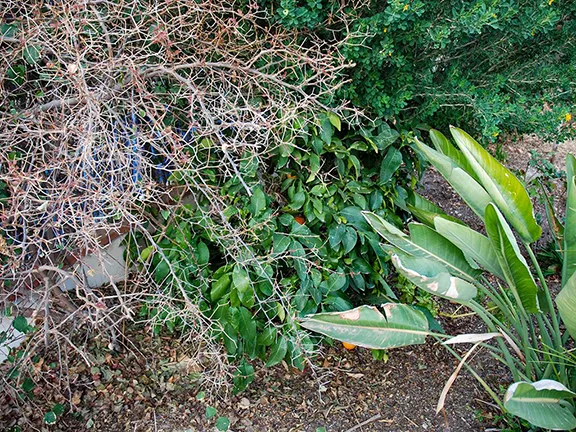
Overgrown orange tree
Much of the available space in the garden is taken up with tiled areas. Initially at least we will leave the tiles in place and grow in pots and raised beds. There are plenty of vertical spaces as well, walls and fences. One area that should prove interesting is the space between our house and that next door. It runs east to west and is pretty well shaded with a solid looking pergola with an, as yet, unidentified vine growing up one post (I suspect grape, we shall see in due course), and jasmine and honeysuckle up others. I am looking forward to using this space, it has been earmarked for a vegetable garden.
At the opposite extreme, we also have a large roof terrace. This area is absolutely open to the sky so will be scorching in summer. Full sun is more of a challenge than a semi shaded area here in Andalucia.
The ground is a coarse sandy alluvial soil, so it is good for drainage but not overly nutritious. To grow organically we are going to have to use plenty of compost.
The previous owners built an aviary towards the top of the sheltered strip between the houses. Its most prominent feature is the weather cock in the shape of a stork perched on the roof. I can see a raised bed there although I do like the stork.
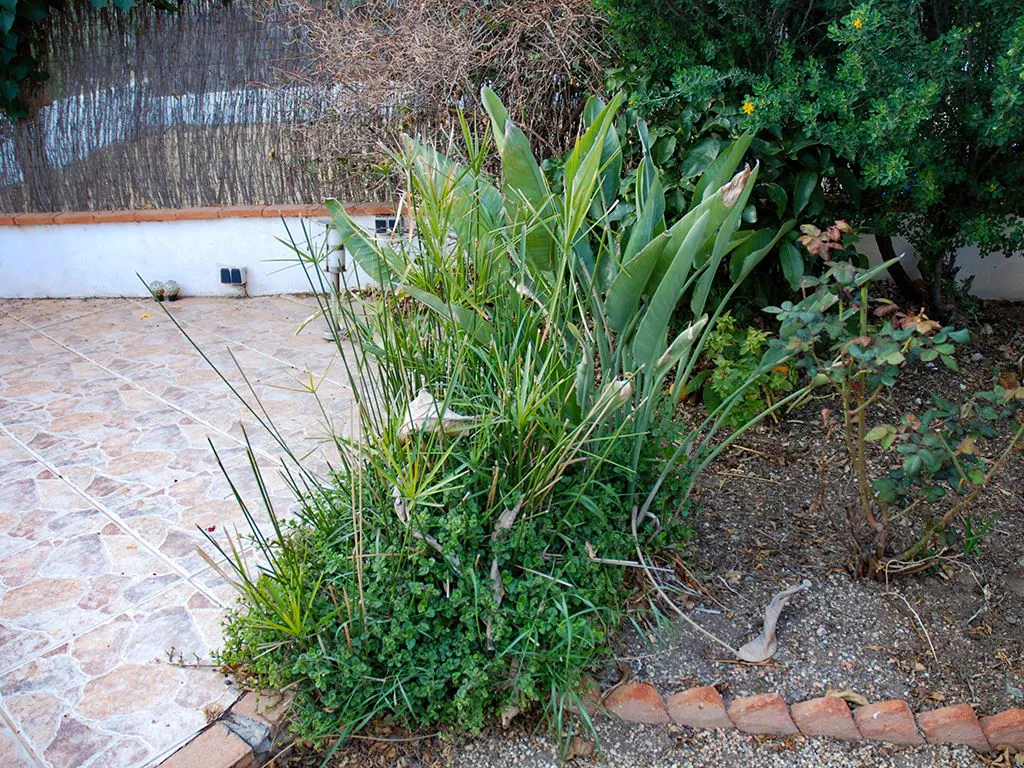
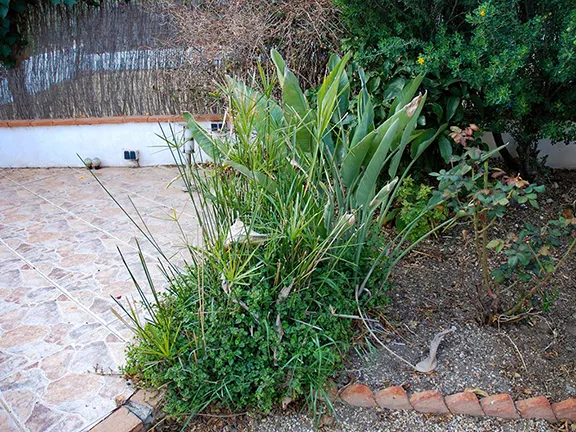
Strelitzia and grass
The first job is to decide what is staying and what is going. There is one orange tree in the garden that has been subsumed by a flowering shrub. The poor thing is so overgrown by the shrub that I do not think it will have set any flowers this year so I do not expect any fruit until the year after next. We shall see. The shrub alongside is obviously prolific, it has small green leaves and fairly insignificant yellow flowers from late February onwards. It has to go.
We have also inherited a strelitzia or bird of paradise plant, again it is a bit neglected, its leaves are paler than they should be and look a bit moth eaten. Still, nothing that a good dose of compost will not cure.
Poking about in the undergrowth I also came across a patch of blue Spanish iris (Iris xiphium native to Spain) and some African daisies that have self-seeded, not to mention a cactus garden that is going to be a challenge to weed. All will be preserved in some form or another.
One corner has an untidy scrabble of large leaved ivy covering the fence and adjoining wall. At the moment it is dirty, dusty and unkempt. Many people consider ivy a nuisance, however its berries and nectar provide essential food for insects and birds during the winter and its growth provides cover for birds, bats and small mammals so, for the time being at least, I am going to tidy it up to encourage new clean growth.
There is also a clump of an ornamental grass, well it’s a rather showy native grass actually, that will have to go. From previous experience this particular grass self-seeds anywhere but seems to favour herb gardens and it is a devil to get rid of when its roots intertwine with plants such as chives and parsley. Mentioning herb gardens, I already have an area earmarked that will become a mixed herb and ornamental garden.
Another plant that has to go is a well-established dracaena. It has been allowed to grow side shoots unchecked for years. Unfortunately, it has become a haven for unwanted bugs and garden detritus so this once statuesque plant will have to be replaced.
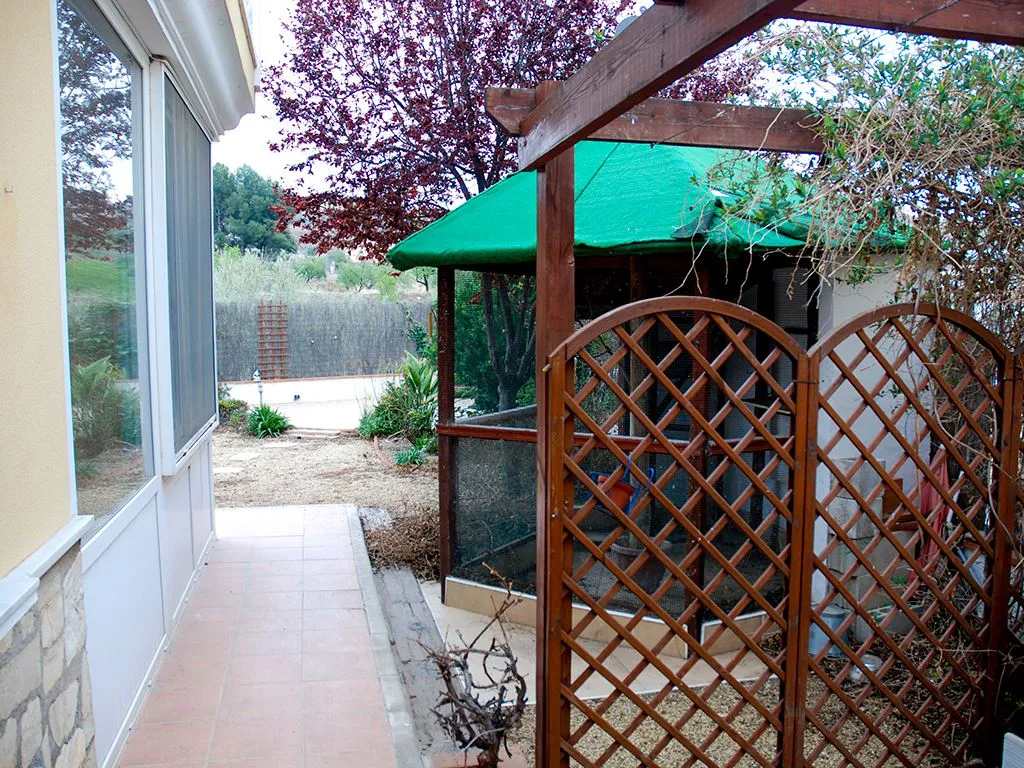
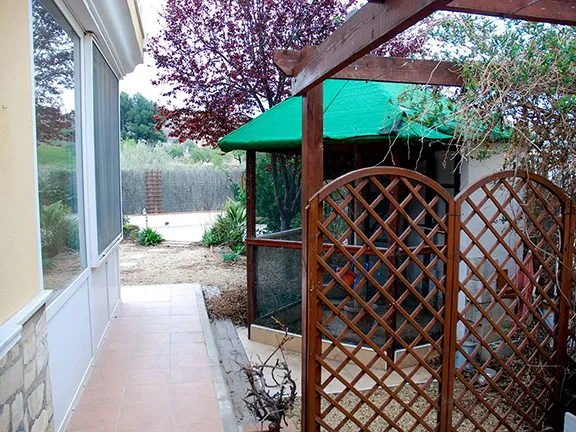
Aviary
Now, finally, I can pick up my shears, pruners, spade and fork. This week I am going to be cutting back overgrown shrubs and clearing the ground of dead leaves and twigs. No doubt I will come across other plants worth saving as I go. The rubbish will be shredded; I invested in an electric shredder some years ago and use it regularly for material that is destined for the compost heap.
The shredded stuff will have to be left in a heap for the time being until I can build the compost bins. To do that I have to first remove a large, now redundant, fresh water holding tank. Then there will be space for a potting bench, a place to store pots and containers and two pallet sized compost bins.
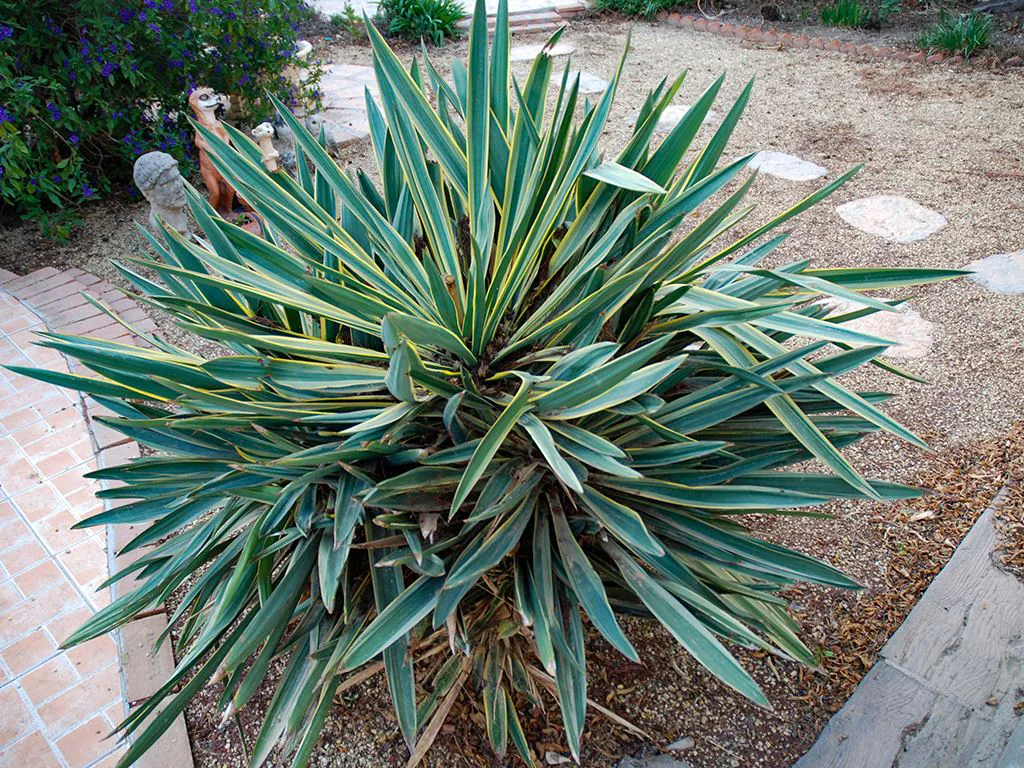
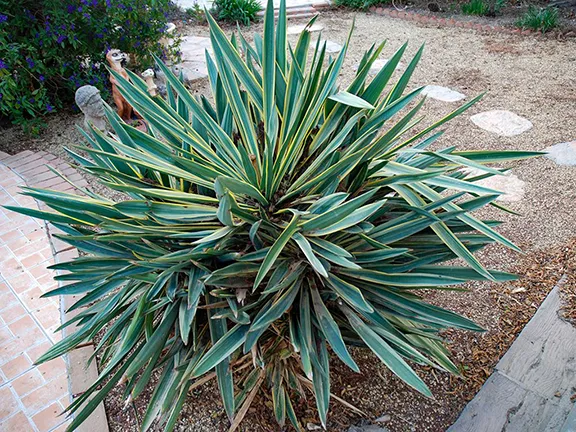
Unkempt dracaena
Julie is going to raid the garden centre at Vera this Saturday looking for instant colour for pots and containers.